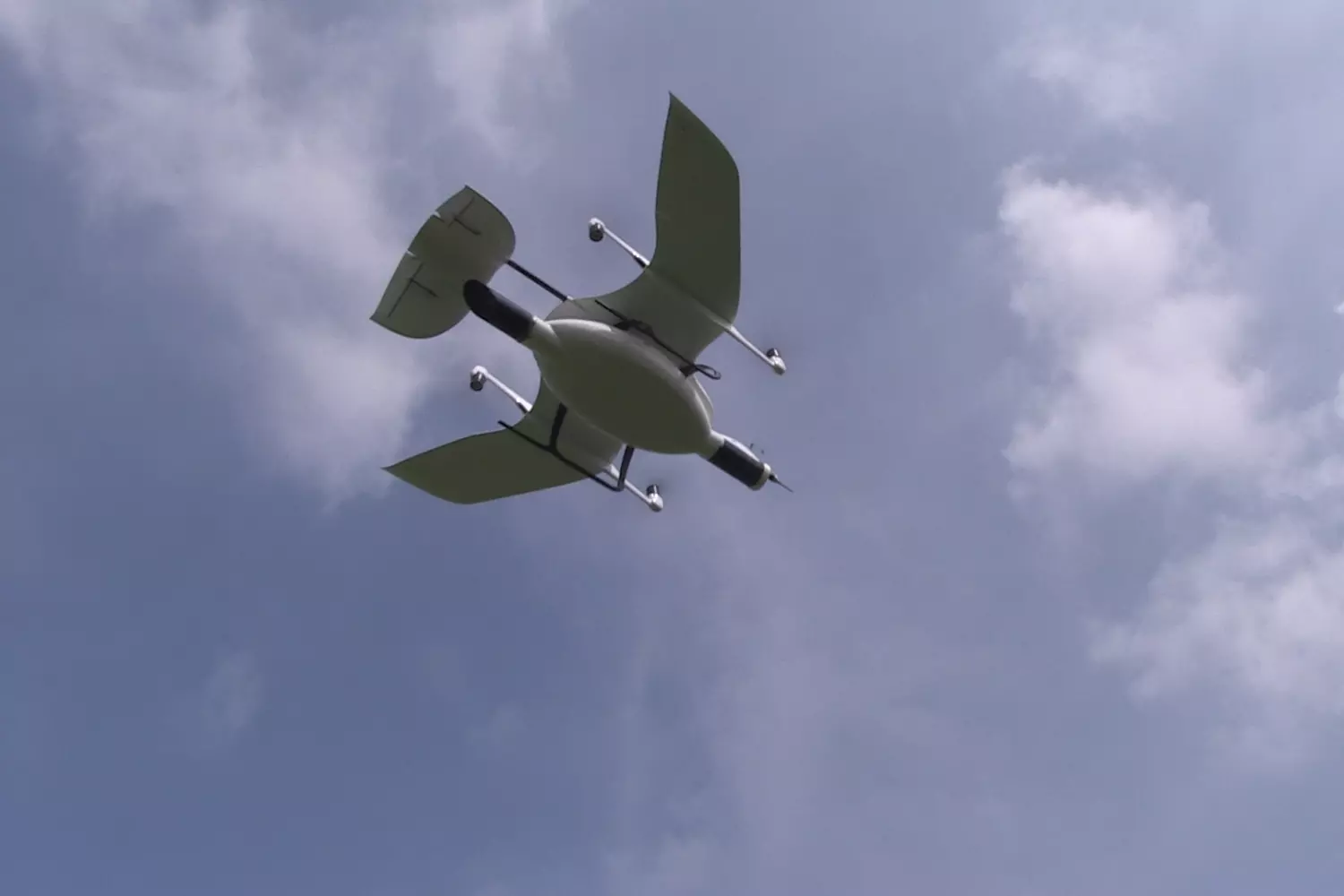Flying measuring platform investigates gases in the air
Researchers at the ZHAW School of Engineering have supported the German Research Centre for Geosciences (GFZ) in the development of a flying measuring platform. The system measures greenhouse gases in the lower atmosphere. The flying device is capable of vertical take-off and landing.

One of the big questions regarding global warming is what quantities of greenhouse gases are being released into the atmosphere currently, and will be in the future, for example from permafrost soil. Within the framework of the new Modular Observation Solutions for Earth Systems (MOSES), the GFZ German Research Centre for Geosciences in Potsdam is investigating, among other things, the exchange of greenhouse gases between the earth and the lower atmosphere. The GFZ has developed a measuring platform for this purpose, which can measure not only the concentrations of gases very quickly and precisely, but also local air currents.
Researchers at the ZHAW Institute of Mechanical Systems (IMES) have integrated the sensors and instruments to take up minimal space so that they can be combined with a commercial drone in a lightweight and compact way. The flying device of choice was the Wingcopter, the technological principle of which is already in use at the ZHAW.
“It was our task to adapt the measuring platform to the Wingcopter’s load capacity, which means concretely that it was allowed to weigh no more than four kilogrammes,” explains IMES project manager Hanfried Hesselbarth.
Besides the sensors for greenhouse gases, the measuring platform also contains a five-hole probe for the wind vector. All in all, the researchers linked half a dozen sensors and meteorological instruments with two computers and attached them to a fibre-composite tube in which the air measurements take place. Furthermore, there is a GPS module, a camera and an inertial measuring unit so that the movement and acceleration of the flying device itself can be measured. The measurement data is stored on a USB stick.
“Thanks to the ZHAW, the measuring system is now able to fly. Our initial tests have been very promising,” says GFZ project engineer Mathias Zöllner. Based on the air measurement data, the system will soon deliver new insights into greenhouse gases and interactions between the earth and the atmosphere.
